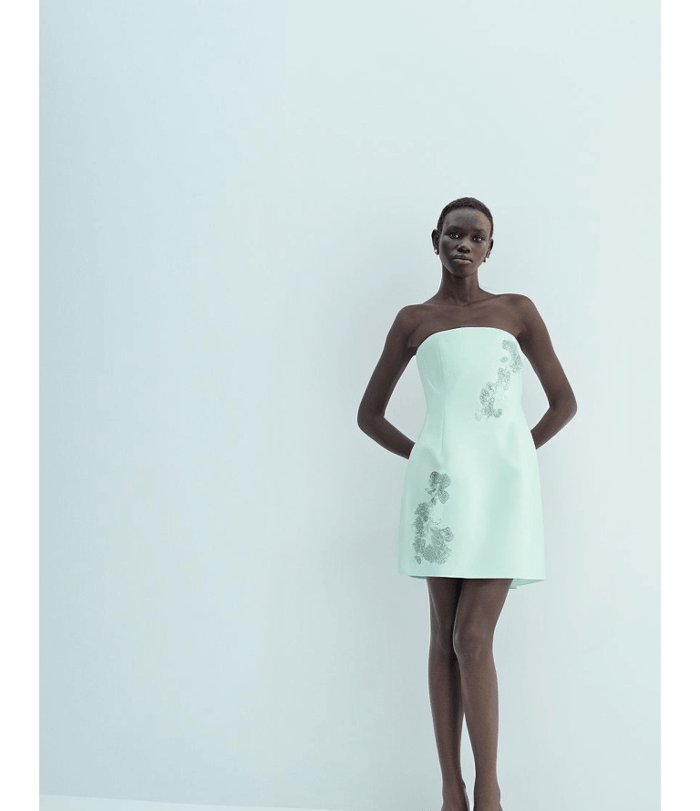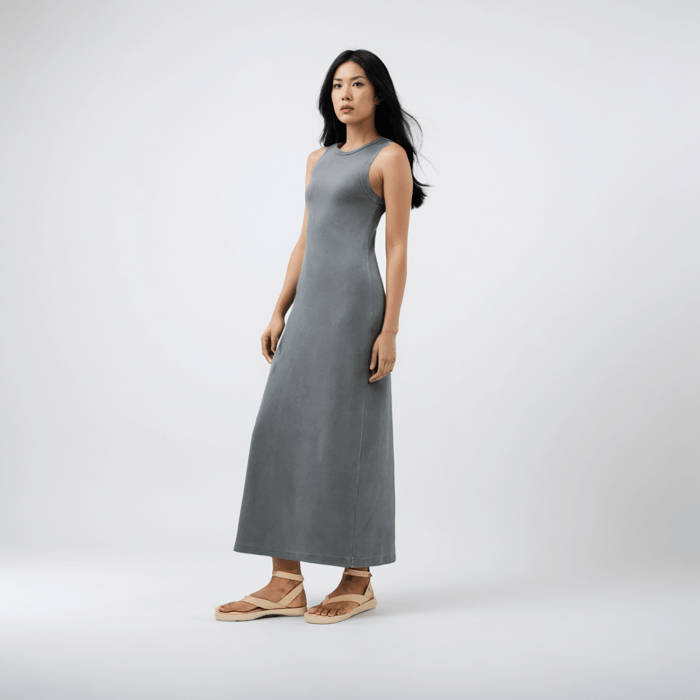What Are Digital Outfits? How AI Is Powering Virtual Style
Table of Contents
Fashion is no longer confined to fabric and thread, it’s moving into pixels and algorithms. The rise of digital outfits is reshaping how people express their style, is reshaping how people express their style... is reshaping how people express their style, especially in online spaces where identity is increasingly visual, customizable, and creative.
From social media to gaming avatars, and from e-commerce previews to full-blown metaverse wardrobes, digital fashion is becoming a core part of the way we engage with clothing and identity. Powered by artificial intelligence, digital outfitsoffer not only a new design frontier but also a more sustainable and scalable alternative to traditional production.
In this article, we’ll dive into what digital outfits really are, how AI is helping shape this growing movement, and why platforms like Modelia are leading the charge into this new era of virtual style.
What Are Digital Outfits?
Virtual garments are clothing items that exist purely in digital form. that exist purely in digital form. They're not manufactured, sewn, or worn physically, instead, they are designed, visualized, and styled to be worn in digital environments. These outfits are applied to avatars, layered onto photos or videos, or even integrated into augmented and virtual reality platforms.
Whether it’s a shimmering jacket for a gaming avatar, a photorealistic dress rendered for a fashion campaign, or an AI-generated look posted on Instagram, digital outfits give users the chance to explore identity without limits.
Today, digital outfits are used across:
Social media (for influencers or AR filters)
Gaming and metaverse platforms (avatars and digital skins)
E-commerce (virtual try-on tools)
NFTs and collectible fashion
For example, Modelia lets brands create high-quality digital outfits that can be styled on diverse, AI-generated models, allowing fashion teams to preview entire collections virtually before producing a single garment.

The Role of AI in Creating Digital Outfits
Artificial intelligence is the backbone of this fashion transformation. When it comes to virtual fashion pieces, AI helps automate, accelerate, and personalize the design process at every stage.
Here's how AI supports digital fashion:
Design generation: AI tools can create outfit ideas based on mood boards, user prompts, or existing collections.
Body modeling: AI helps simulate how digital outfits fit and move on various body types and avatars.
Texture and lighting realism: Machine learning algorithms add lifelike fabrics, draping, and shading, making digital outfits look just like physical clothing.
Personalization: AI analyzes data from user behavior, social trends, and styling preferences to recommend or generate looks tailored to specific audiences.
Modelia is a clear example of this synergy. With its AI Clothing Design system, users can upload sketches or prompts, and the tool generates hyper-realistic outfits styled on AI models. The platform allows for pose and background customization, creating campaign-ready assets instantly.
Benefits of Virtual Fashion for Brands and Creators
As virtual garments become more mainstream, fashion brands and creators are discovering a range of benefits from cost savings to creative freedom..
1. Lower Costs, Higher Scalability
No materials. No physical samples. No shipping. Digital outfits eliminate most of the overhead associated with traditional fashion design. With platforms like Modelia, brands can prototype dozens of looks digitally and choose only the best ones for production, saving thousands.
2. Creative Freedom
Designers are no longer bound by real-world constraints. Want to create a gravity-defying cape made of liquid metal? No problem. Digital wearables open the door to fantasy, experimentation, and storytelling without limits.
3. Sustainable Fashion
Creating digital outfits reduces waste, carbon emissions, and overproduction. Virtual fashion campaigns can launch without producing a single garment, making this a greener alternative.
4. Engagement on Social Media
Brands and influencers are already using digital outfits in social media campaigns to stand out with bold, futuristic looks. AI-powered styling tools allow for quick iteration, and Modelia’s avatars can wear outfits that reflect real-world diversity and fashion-forward aesthetics.

Digital Outfits & Virtual Wardrobes: Use Cases
The applications of virtual clothing go far beyond just styling. Here’s where virtual fashion is already making an impact:
E-Commerce Try-Ons
AI-powered virtual try-on tools allow users to see how 3D garments would look on their body type, improving the online shopping experience and reducing returns.
Avatar Styling
Gamers and metaverse users are building full wardrobes of virtual looks to express themselves in virtual spaces.
Fashion Marketing
With Modelia, brands can skip photoshoots and instead generate complete lookbooks and campaign visuals featuring virtual designs styled on AI models in minutes.
Collectible NFTs
Some designers are turning digital outfits into NFT collections, creating one-of-a-kind virtual garments with blockchain ownership.
Digital-Only Brands
Several startups are launching fashion labels that exist only in digital form. These brands design, market, and sell outfits that customers never wear physically but use in photos, games, or digital platforms.
The Future of Digital Fashion & AI
The future of digitally rendered clothing is not just promising, it’s inevitable. As AI continues to evolve, so will the way we create, wear, and interact with fashion.
Here's what to expect:
AI-Powered Stylists that curate virtual wardrobe looks based on your personality, mood, or even calendar events.
Hyper-Realistic Avatars that mirror your exact look and measurements, making try-ons and virtual fashion shows even more lifelike with digital ensembles.
Cross-Platform Fashion that allows you to wear the same digital outfit in different virtual environments, your Instagram post, your Zoom background, or your VR hangout.
Real-Time Outfit Generation where AI tools design outfits live during events, games, or video streams.

Digital Fashion as a Tool for Identity and Culture
Beyond the runway and retail, virtual fashion is becoming a new form of cultural expression. People now use fashion not just to impress in real life, but to define themselves online, across social platforms, avatars, and digital experiences. These virtual garments enable wearers to explore different aesthetics, experiment without risk, and connect with niche communities that share the same style language. It's no longer just about what you wear, but where you wear it physically or virtually.
Conclusion
Virtual fashion pieces are more than just a trend, they’re a transformation. They represent a shift in how we design, consume, and experience fashion. With AI powering this evolution, designers and brands have the tools to create with speed, sustainability, and imagination.
Whether you’re a fashion house rethinking production or a creator looking to stand out online, virtual fashion assets offer a world of opportunity and it’s only just beginning.
FAQ: Digital Outfits
What are digital outfits and how do they work?
Digital outfits are virtual clothing designed using 3D modeling or AI tools. They can be worn on avatars in games, social media, or virtual environments, allowing users to experiment with fashion without physical garments.
Why are digital outfits becoming popular in fashion?
They offer limitless creativity, sustainable options, and cost-effective ways to showcase fashion. Brands can test new styles and consumers can express themselves digitally without producing physical waste.
How can I create my own digital outfit?
Users can create digital outfits using fashion design software, AI-powered tools, or virtual wardrobe apps. These platforms allow customization of fabrics, colors, textures, and fit to create unique digital looks.
Can digital outfits be used for real-world fashion marketing?
Yes, brands use digital outfits for marketing campaigns, virtual try-ons, and social media content. They help showcase new collections, engage audiences, and reduce the need for physical photoshoots.
How would you rate this article:
Related Articles
- Essential Flat Lay Photography Tips for Perfect Shots
- The Best Sustainable Fashion Brands Changing the Industry
- The Future of AI Shopping: Smarter, Faster, Personalized
- Top 6 Alternatives to Lalaland.ai for AI Fashion Model Generation
- Enhancing Mannequin Images for Modeling: How to Create Realistic Shots
- Product Photography for Ecommerce: Tips for High-Converting Images
- AI-Generated Fashion: Revolutionizing the Fashion Industry with Artificial Intelligence
- How to Swap Faces in Photos with AI
- Change Clothes in Photos Instantly with AI
- 7 Best fashion AI tools for designers


